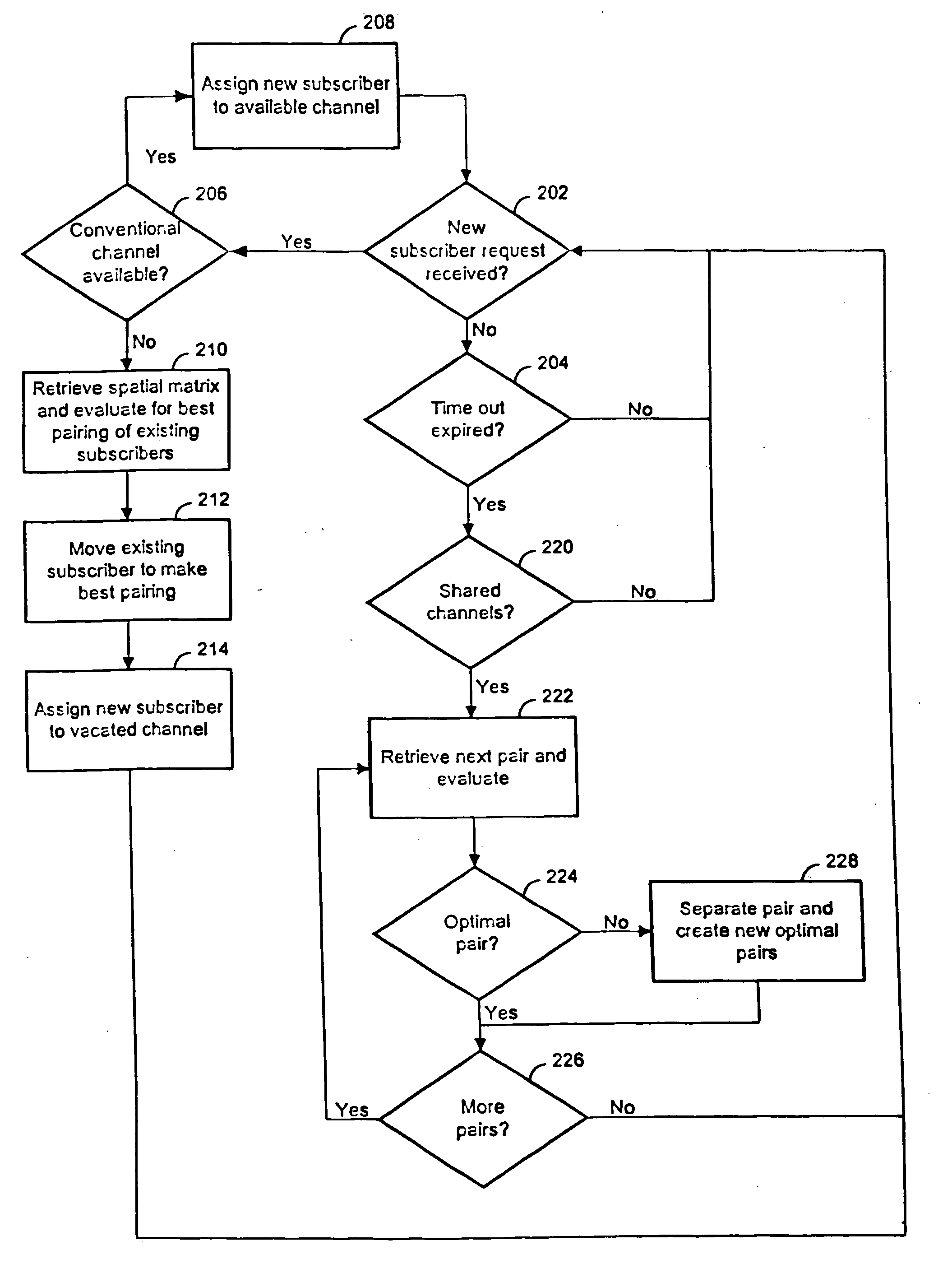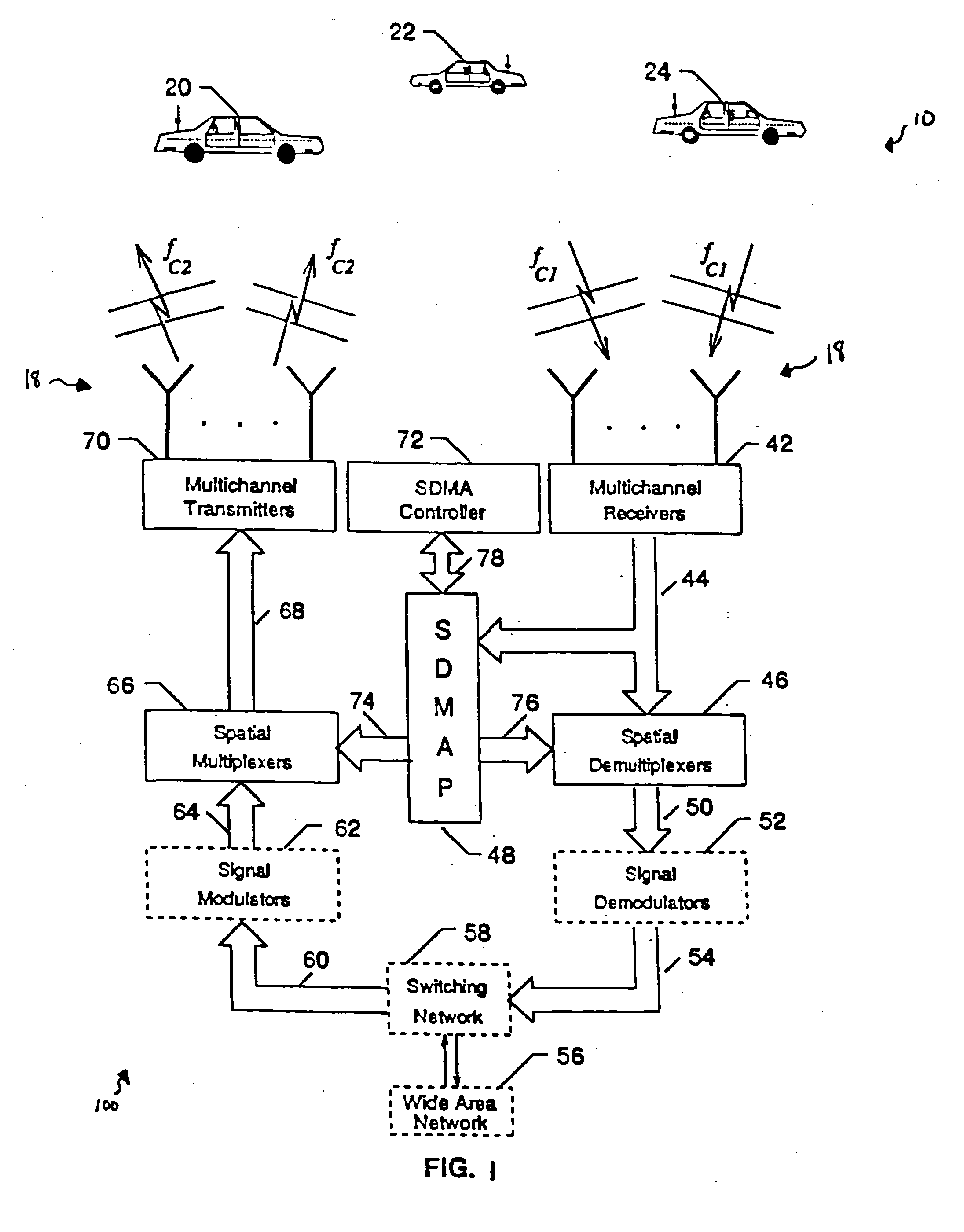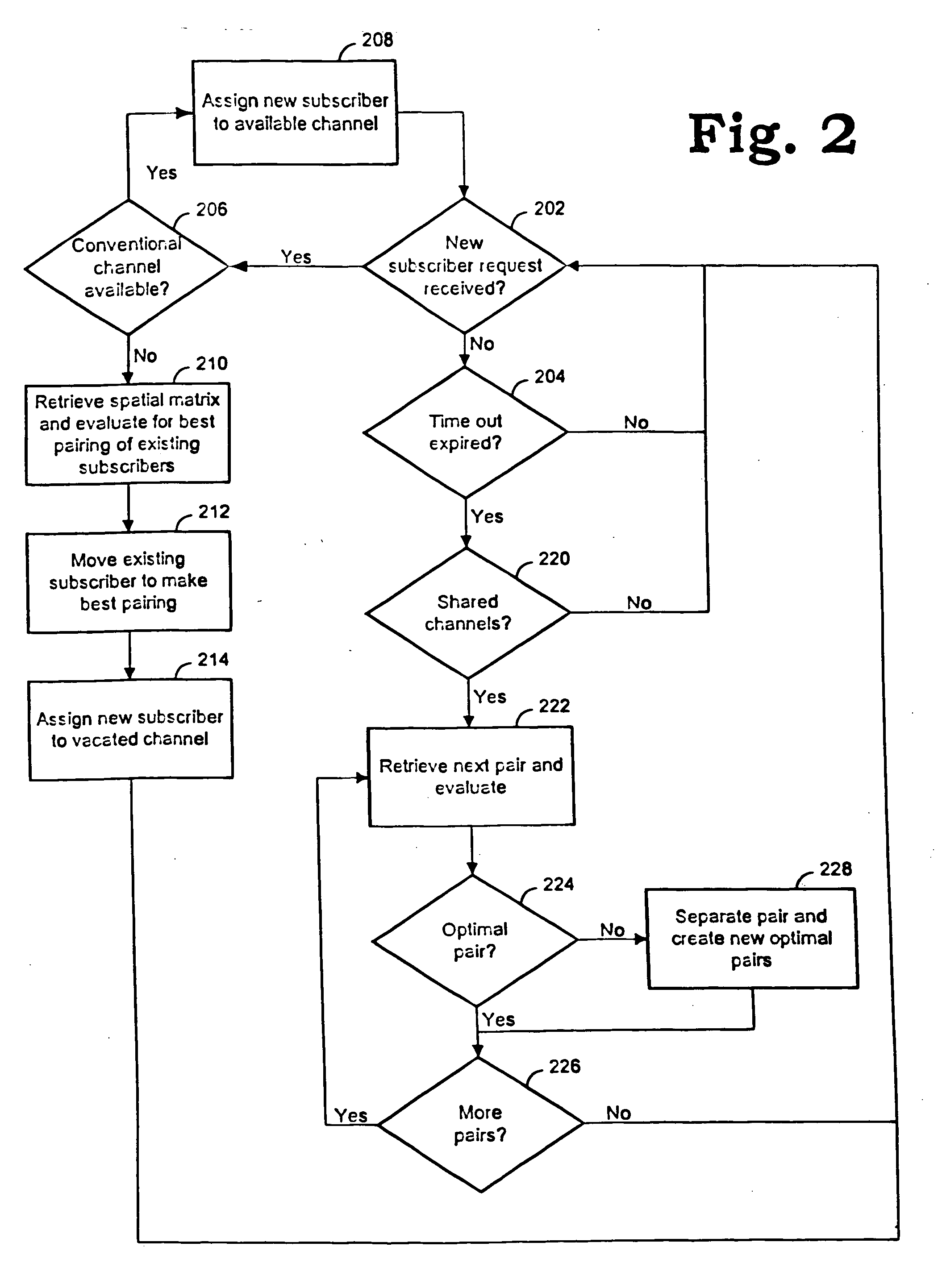Reassigning channels in a spatial diversity radio communications system
a radio communication system and spatial diversity technology, applied in the field of spatial diversity radio communication system assignment, can solve the problems of system capacity limitation in general, severe degrade the quality of communications, and the use of frequency spectrum can introduce co-channel (intercell) interference between users, so as to facilitate the retrieval, evaluation and management of risk in the wireless communication system
- Summary
- Abstract
- Description
- Claims
- Application Information
AI Technical Summary
Benefits of technology
Problems solved by technology
Method used
Image
Examples
Embodiment Construction
[0028]FIG. 1 shows a wireless SDMA TD / FD / CDMA system (wireless system 10) in which a number of subscriber stations (symbolically shown as mobile units) 20, 22, 24 are being served by cell station 100 that may be connected to a wide area network (WAN) 56 for providing any required data services and connections external to the immediate wireless system 10. Switching network 58 interfaces with WAN 56 for providing multi-channel duplex operation with the WAN by switching incoming WAN data to lines 60 of cell station 100 and switching outgoing signals from cell station 100, on line 54 to the WAN. Incoming lines 60 are applied to signal modulators 62 that produce modulated signals 64 for each subscriber station 20-24 in communication with cell station 100. A set of spatial multiplexing weights 74 for each subscriber station 20-24 are applied to the respective modulated signals in spatial multiplexers 66 to produce spatially multiplexed signals 68 to be transmitted by a bank of multi-chann...
PUM
 Login to View More
Login to View More Abstract
Description
Claims
Application Information
 Login to View More
Login to View More - R&D
- Intellectual Property
- Life Sciences
- Materials
- Tech Scout
- Unparalleled Data Quality
- Higher Quality Content
- 60% Fewer Hallucinations
Browse by: Latest US Patents, China's latest patents, Technical Efficacy Thesaurus, Application Domain, Technology Topic, Popular Technical Reports.
© 2025 PatSnap. All rights reserved.Legal|Privacy policy|Modern Slavery Act Transparency Statement|Sitemap|About US| Contact US: help@patsnap.com



